Attention all dog lovers and curious pet owners! Get ready to dive into the age-old discussion of whether or not our favorite pet friends can safely delight in raw meat. Let’s release the truth and separate fact from myth, as we study the possible benefits and risks involved in this controversial canine diet. If you’ve ever wondered if raw is really better for your dog or worried about possible health risks, join us on this insightful journey where we uncover everything you need to know about giving your four-legged friend a deliciously natural feast. Ready? Let’s start on this educational journey together!
The issue of bringing raw meat into a dog’s diet has caused much talk and debate in recent years. Proponents claim that a raw diet offers numerous benefits to our canine friends, such as better digestion, shinier hair, healthier teeth and gums, and increased energy levels. On the other hand, doubters voice worries about possible health risks connected with eating uncooked meat, including bacterial diseases and vitamin deficits.
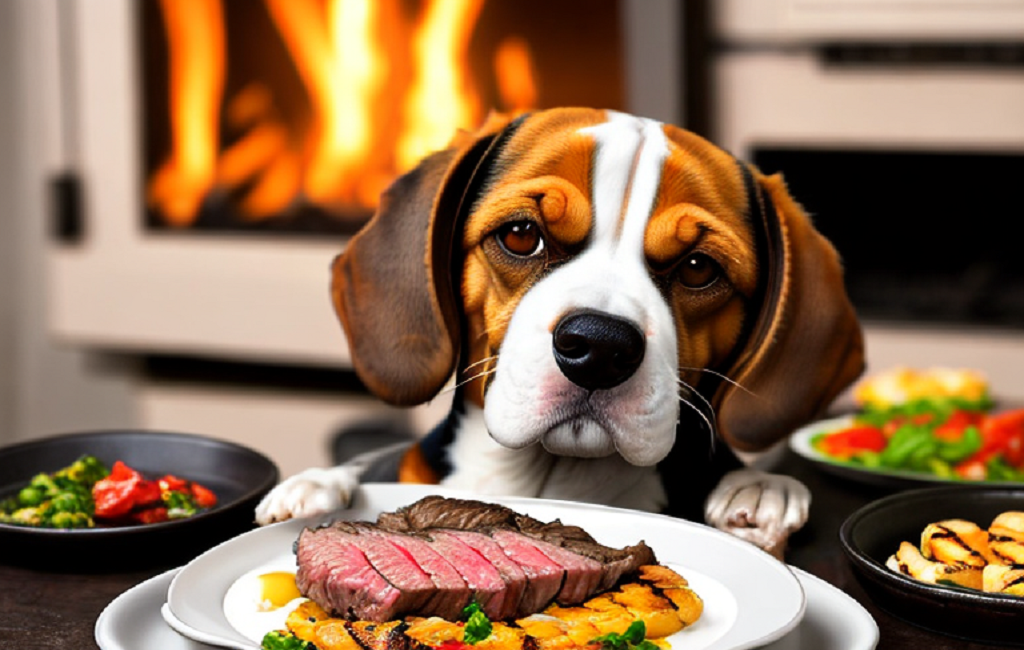
As pet parents, we all want what is best for our furry family members. However, with varying information and views surrounding the subject of raw feeding, it can be challenging to work through the noise and make an informed choice for our dogs’ well-being. This is why it is important to study both sides of the argument and explore solid studies on the matter.
In this piece, we will look into the background of raw food for dogs and its growth over time. We will also look into the biology of dogs and their natural meals in the wild to understand if they are naturally made to eat raw food. Furthermore, we will review different types of raw meals available for dogs and their possible benefits or risks.
We cannot ignore that feeding a raw diet to our canine friends comes with certain duties. It takes careful planning, finding high-quality products, and following proper food safety practices to ensure our dogs’ health and well-being. Therefore, it is important to understand these factors before making the switch to a raw diet.
Finally, we will address common myths and misconceptions surrounding raw feeding for dogs and provide tips for those interested in adding raw meat into their dog’s diet. With all this knowledge at hand, you will be ready to make an informed choice on whether a raw diet is good for your dog.
So come along as we start on this journey of finding the truth behind giving our pet friends raw meat. Let’s reveal the facts and debunk the lies together!
Introduction to the Controversy of Dogs Consuming Raw Meat
For many dog owners, the argument over whether raw meat is a safe and healthy choice for their pet friends has been ongoing. On one side, there are supporters who say that raw meat meals closely mirror what dogs would eat in the wild and provide numerous health benefits. On the other side, there are worries made by vets and officials about possible health risks linked with eating raw meat.
To fully understand this debate, it is important to study both sides of the argument and consider all facets of giving raw meat to dogs.
The Beginnings of Raw Feeding
The idea of giving dogs raw meat stems from the belief that canines evolved as hunters who mainly consumed wild animals in their natural surroundings. This concept was first promoted in 1993 by Australian doctor Ian Billinghurst, who coined the name “BARF” (Biologically Appropriate Raw Food) diet for dogs.
Proponents of BARF claim that widely produced dog foods often contain lower quality ingredients, such as fillers and chemicals, that can be harmful to our pets’ health. They think that a raw meal made of muscle foods, bones, innards, fruits, and veggies more closely matches what dogs would consume naturally in the wild and provides them with ideal nutrients.
Potential Benefits of Feeding Raw Meat
Supporters of a raw diet claim that it offers various benefits for our canine friends. Some common benefits stated include:
- Improved Digestion: Many think that a raw meat-based diet is easier for dogs to stomach, as it includes natural enzymes and bacteria that help in the breakdown and uptake of nutrients.
- Healthier Skin and Coat: A raw diet is said to promote healthy skin, a shiny coat, and less hair due to the high amounts of important fatty acids found in uncooked foods.
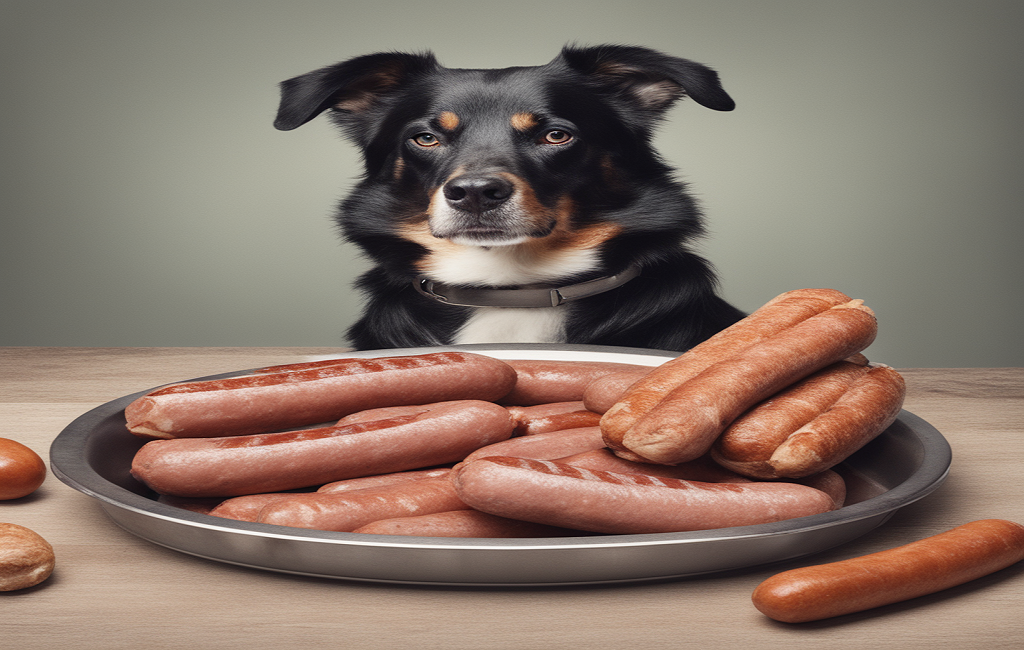
- Better Dental Health: Raw meat meals often include bones or cartilage, which proponents say can help clean a dog’s teeth and avoid plaque build-up.
- Fewer Allergies: Some say that giving raw meat can reduce allergies in dogs since the diet does not contain grains and other common allergens found in commercial dog food.
Concerns over Raw Diets
Despite the supposed benefits of giving dogs raw meat, there are also worries made by vets and health officials about possible risks associated with this practice:
- Bacterial infection: One of the biggest worries regarding raw meat diets is the risk of bacterial infection, especially by Salmonella and E. coli. These germs can cause serious sickness in both dogs and people who come into touch with them.
- Nutritional Imbalances: Without proper planning and care, a homemade raw meal may lack important vitamins and minerals necessary for a dog’s health.
- Potential for Injury: Raw foods often include bones, which can cause harm to a dog’s digestive system, teeth, or mouth if not properly prepared or watched during feeding.
- Cost and Availability: Feeding a raw diet can be expensive and difficult to find all the necessary items, especially for bigger dogs.
In the end:
The debate surrounding giving dogs raw meat is complicated and ongoing. While some dog owners swear by its benefits, others are more careful about possible risks. Ultimately, the choice whether to feed a dog raw meat should involve careful review of the individual dog’s health, lifestyle, and nutritional needs with advice from a doctor.
While further study is needed to fully understand the effects of this food on canine health, it is important for dog owners to educate themselves about both viewpoints before making an informed choice on what is best for their pet friend.
The genetic and physiological background of dogs and raw meat eating
Dogs have been tamed for thousands of years, growing alongside people and responding to their surroundings. As hungry animals, it is only normal that dogs would take meat as part of their food. In fact, recent studies have shown that the ancestors of modern-day dogs were mainly scavengers, living on raw meat scraps left behind by early human societies.
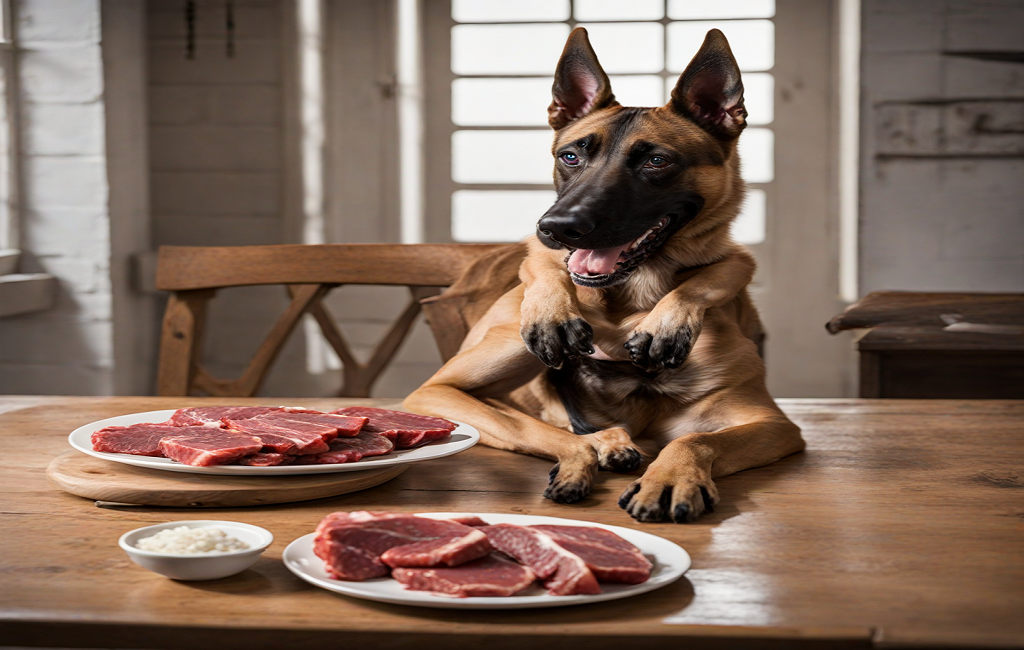
From a genetic view, dogs are naturally made to consume raw meat. Their gut systems are designed to break down and receive nutrients from uncooked animal proteins more efficiently than plants or cooked meats. This is because the natural enzymes and germs found in a dog’s stomach are better able to handle raw meat processing.
Additionally, dogs possess sharp teeth and strong jaws, which serve as evolved tools for tearing through tough animal meat. Their bodies also make bigger amounts of bile acid needed for digesting high levels of protein found in raw foods.
Furthermore, wild dogs such as wolves and coyotes have been observed eating raw corpses without any negative health effects. This shows that while being tamed may have slightly changed a dog’s digestive system over time, they still keep much of their ancestors’ ability to digest raw meat successfully.
On the medical side of things, numerous studies have studied the benefits of adding raw meat into a canine diet. The most noticeable benefit being its effect on oral health. Chewing on bones and cartilage from raw meat offers excitement for a dog’s teeth and gums while keeping them clean from plaque buildup.
Raw meat intake has also been linked to better gut health in dogs. The natural enzymes and bacteria found in raw meat help in breaking down food and boosting the growth of healthy gut flora, leading to better digestion and uptake of nutrients.
Another benefit of raw meat eating is its high vitamin density. Raw foods contain important vitamins, minerals, and amino acids that are easily taken by a dog’s body and add to their general health and vigor.
However, it is important to note that while raw meat can provide many benefits for dogs, it is crucial to ensure proper food safety steps are taken when handling and giving it. Raw meat can carry dangerous germs that can lead to foodborne illnesses in both people and dogs. It is important to find high-quality, human-grade raw foods from reliable sources and follow proper cleaning practices when handling them.
In conclusion, the genetic history and molecular makeup of dogs support their need for a food rich in meat-based nutrients. While there are some risks involved with giving raw meat, when done right, it can offer many benefits for a dog’s general health and well-being. Ultimately, it is important for dog owners to research and speak with doctors before making any major changes to their pet’s diet.
Potential benefits of a raw meat diet for dogs
A raw meat diet, also known as the “BARF” (biologically suitable raw food) diet, has been gaining acceptance among dog owners in recent years. Proponents of this diet say that it is the most natural and healthy way for dogs to eat, as it mirrors their ancestors’ meals when they were still wild. But are the possible benefits of a raw meat diet truly worth considering? In this part, we will explore some of the possible benefits that have been associated with giving dogs a raw meat diet.
- Improved Digestive Health: Raw meat includes live enzymes and bacteria that can help in digestion and support a healthy gut microbiome. This can be especially helpful for dogs who deal with stomach problems such as bloating, gas, or diarrhea.
- Healthier Skin and Coat: A dog’s skin and coat health are often a sign of their general well-being. The nutrients found in raw foods, such as omega-3 fatty acids and Vitamin E, can improve skin health and promote a shiny coat.
- Stronger Immune System: Freshly made raw foods contain important vitamins and minerals that support a dog’s immune system. By giving their bodies with all the necessary nutrients, dogs on a raw meat diet may have better protection against common sicknesses.
- Increased Energy Levels: Many dog owners report that their pets seem to have better energy levels after moving to a raw meat diet. This could be due to the higher protein level in raw foods compared to packaged dog food.
- Better Dental Health: Chewing on raw bones and meat can help keep your dog’s teeth clean and healthy. The chewing motion helps clear plaque and tartar growth, leading to better tooth health in the long run.
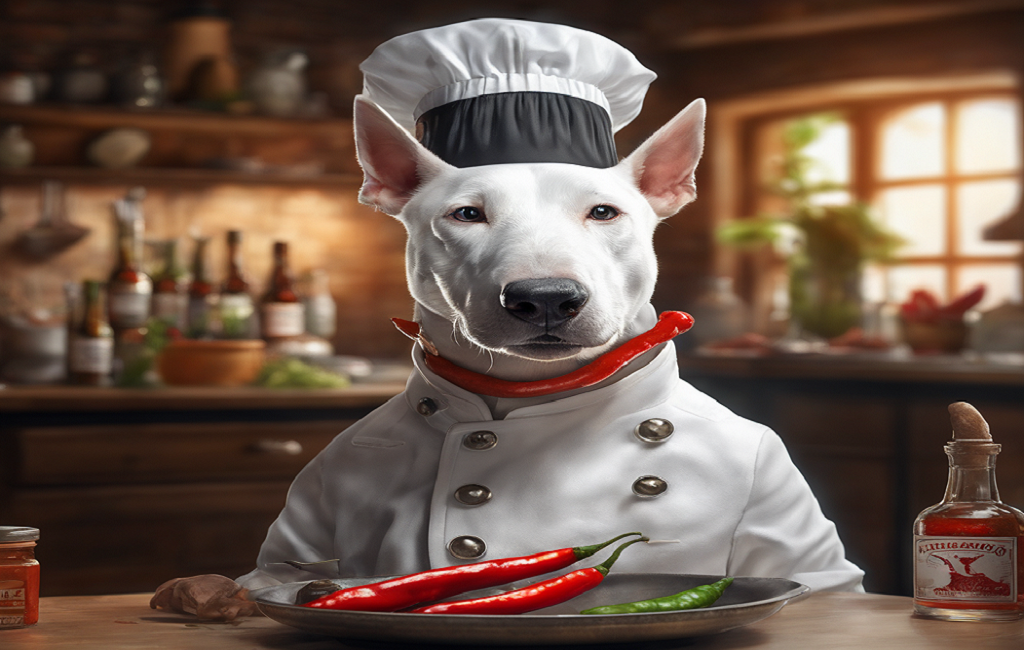
- Reduced Allergies and Food Sensitivities: Some dogs may have allergies or sensitivities to certain chemicals typically found in commercial dog food, such as grains or fake additives. By giving a raw meat diet, pet owners have more control over what their dogs are taking, which may help ease these problems.
- Improved Weight Management: Many dogs deal with weight problems, whether it’s being overweight or underweight. A raw meat diet allows you to control the amount of fat and carbs your dog takes, making it easier to manage their weight.
Of course, every dog is different, and there is no guarantee that moving to a raw meat diet will provide all of these benefits for your pet. It is always important to speak with a doctor before making any major food changes for your dog. They can help you decide if this type of food is good for your pet based on their individual needs and health issues. Overall, the possible benefits of a raw meat diet make it worth considering as a choice for your canine friend.
Risks and worries involved with giving dogs raw meat
Feeding raw meat to dogs has been a divisive topic for quite some time now. While many dog owners swear by the benefits of a raw meat diet, others have voiced worries about its safety and possible risks. In this part, we will look into some of the usual risks and concerns involved with giving dogs raw meat.
1) Bacterial contamination:
One of the biggest worries linked with giving dogs raw meat is the risk of germ poisoning. Raw meat, especially chicken, can carry dangerous germs such as Salmonella, E.coli, and Campylobacter. These germs can cause major illnesses in both people and dogs if consumed. Dogs have a much lower tolerance for these types of germs compared to people, leaving them more subject to food sickness.
2) Nutritional imbalances:
Another worry when it comes to giving dogs a raw meat diet is the possible nutritional changes that may appear. While whole carcasses like rabbits or chickens may provide all the necessary nutrients for dogs, exclusively feeding them muscle tissue from larger animals like cows or pigs may not provide a well-balanced diet. This could lead to deficiencies in essential vitamins and minerals over time.
3) Potential choking hazards:
Raw bones are often included in a raw meat diet for dogs as they are an excellent source of calcium and other minerals. However, there is always a risk that these bones could splinter and cause choking or intestinal blockages in dogs. This is especially true for cooked bones which become brittle and dangerous when consumed.
4) Parasite infestations:
Feeding dogs raw meat, particularly wild game meats, can also increase their risk of parasite infestations. These parasites, such as Toxoplasma gondii and Neospora caninum, can be passed on to your dog through the consumption of raw meat from infected animals. This can lead to various health issues including vomiting, diarrhea, weight loss and in severe cases, even death.
5) Potential for spreading zoonotic diseases:
Zoonotic diseases are those that can be passed between animals and humans. By feeding your dog a raw meat diet, you are not only putting them at risk but also exposing yourself and your family members to these diseases. This is because handling raw meat or coming into contact with your dog’s saliva after they have eaten raw meat increases the chances of spreading harmful bacteria and pathogens.

6) Increased cost and difficulty:
Feeding a dog a balanced raw meat diet can be expensive and time-consuming. It requires proper research and education on which types of meats to include in their diet and how much of each type is needed to provide adequate nutrition. This may not be feasible for all pet owners who may not have the resources or knowledge to properly feed their dogs a raw meat diet.
Conclusion:
While there may be some potential benefits to feeding dogs a raw meat diet, it is important to carefully consider and address the risks and concerns associated with it. If you do choose to feed your dog raw meat, make sure to take necessary precautions such as properly handling and storing raw meat, regular veterinary check-ups, and balancing their diet with other food sources to reduce these risks. It is always recommended to consult with a veterinarian before making significant changes to your pet’s diet.
How to safely incorporate raw meat into a dog’s diet
Getting started:
Raw meat is often seen as a controversial topic in the world of canine nutrition. While many dog owners believe it is a natural and healthy addition to their pet’s diet, others have concerns about safety and potential health risks. In this section, we will explore the best practices for safely incorporating raw meat into your dog’s diet.
- Seek advice from a veterinary nutritionist:
You should talk to a veterinary nutritionist before making any changes to your dog’s diet. They will be able to figure out what your dog needs to eat based on its age, breed, size, and level of activity. You can also ask a nutritionist how much raw meat you should add to your dog’s food based on what they are already eating.
- Pick Meat That Is Good:
It’s important to get high-quality meat from reputable suppliers when giving raw meat to dogs. It’s best to buy meat that hasn’t been treated with hormones or antibiotics and has been sourced and handled in an honest way. You might also want to buy human-grade meats, which are subject to strict safety standards.
- Use the Right Handling Methods:
Handling raw meat the right way is very important for making sure it is safe for both people and animals. After handling raw meat, always wash your hands well, and when making food for your pet, use a separate cutting board and tools. Also, frozen meats should be defrosted in the fridge instead of being left out at room temperature.
4 . Bring in raw meat slowly:
Changes in a dog’s diet can be hard on their digestive systems. It is best to slowly add raw meat to your dog’s diet so that it doesn’t get upset stomach. At first, add small amounts. Then, over a few weeks, slowly increase the size of each serving. Keep an eye on your dog’s health and stools during this time of change.
- Give a Healthy Diet:
Dogs can’t get all the nutrients they need from raw meat on its own. So, it’s important to provide a balanced diet by adding other foods like supplements, fruits, and vegetables. These can help add vitamins, minerals, and fiber that raw meat might not have enough of.
- Think about these food safety tips:
In the same way that people can get sick from eating contaminated food, dogs can too. It is very important to take the right precautions, like washing fruits and vegetables before giving them to your pet and not giving them meat that has gone bad or expired.
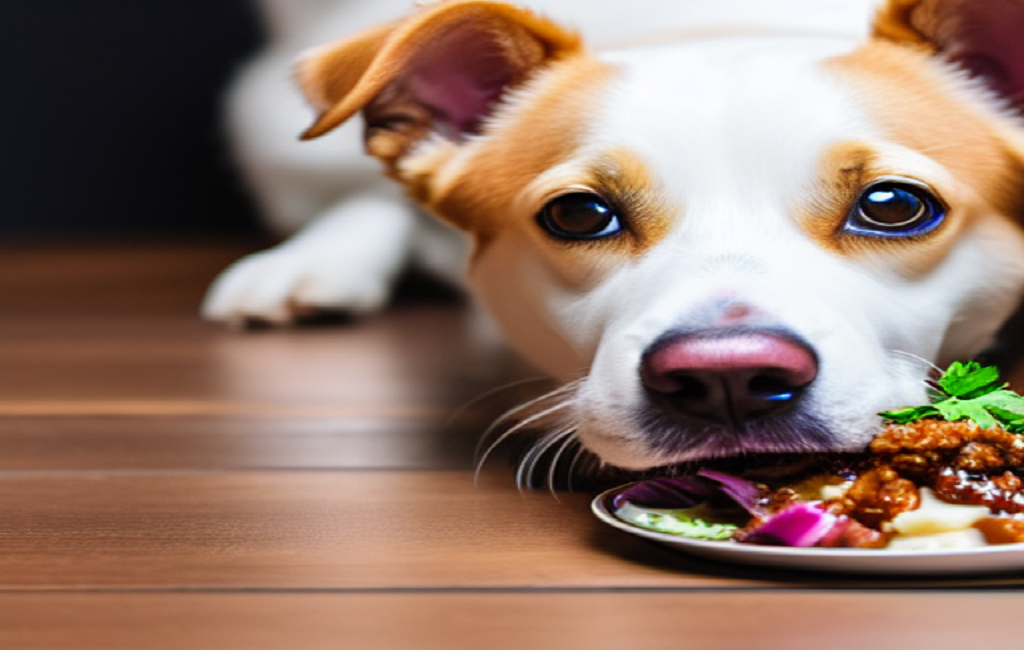
- Keeping an eye out for allergy symptoms:
Many people think that raw meat is safe for dogs with food allergies, but some dogs may still have a bad reaction to certain types of meat or proteins. If you give your dog raw meat and suddenly notice itching, redness, or stomach problems, you should talk to your vet right away.
In the end:
Giving a dog raw meat can help its digestion, make its skin and fur healthier, and give it more energy, among other things. To make sure your dog’s diet is balanced, you should follow food safety rules and work closely with a veterinary nutritionist. There is no risk of giving your dog this nutrient-dense food source if you follow these steps and slowly add raw meat to their meals.
Different ways to give dogs a healthy diet without raw meat
The raw meat diet is popular with dog owners, but there are other options for people who are worried about the safety or nutritional value of this diet. This part will talk about some good alternatives to raw meat that you can use to feed your dog a healthy, well-balanced diet.
- Meals made at home: Making meals at home is one way to give your dog a balanced diet without giving it raw meat. You can be sure that your dog’s food is safe and healthy because you have full control over the ingredients that go into it. Along with cooked vegetables and grains, you can add lean proteins like chicken, fish, or eggs to make a complete meal for your dog.
- Commercially prepared diets: You could also choose commercially prepared diets that are made just for dogs. Today, there are many brands of high-quality kibble or canned food for dogs that are made from real meat, vegetables, and grains. To make sure these products meet all of dogs’ nutritional needs, they are put through a lot of tests and must follow strict rules set by veterinary nutritionists.
- Vegan or vegetarian diets: Despite what most people think, dogs can do well on plant-based diets as long as they get all the nutrients their bodies need. If you decide to go this route, you should talk to a vet or a canine nutritionist to make sure you are giving your dog a healthy, complete vegetarian or vegan diet. Legumes, grains, and sources of healthy fats like flaxseed are important parts of these diets.
- Raw meat alternatives: There are several alternative forms of raw meat available that may be less concerning for some dog owners. These include freeze-dried or dehydrated raw diets, which have been processed to remove any harmful bacteria while still providing the benefits of a raw diet. Another option is to supplement your dog’s diet with freeze-dried or raw meal toppers as an occasional treat or source of additional protein.
- Supplements and multivitamins: If you are concerned about your dog receiving all the necessary nutrients on a non-raw meat diet, you can speak with your veterinarian about adding supplements or multivitamins to their meals. These can help ensure they receive the right balance of essential vitamins and minerals necessary for optimal health.
Conclusion:
Feeding dogs a balanced diet without raw meat is possible with proper planning and attention to nutritional needs. Whether opting for home-cooked meals or commercially prepared diets, it is essential to make sure your dog receives all the nutrients they need for a happy and healthy life. Consult with your veterinarian before making any changes to your dog’s diet to ensure it meets their specific dietary requirements.
Personal experiences and success stories from dog owners who have fed their pets raw meat
Raw meat has been a topic of controversy when it comes to feeding our beloved four-legged friends. While some pet owners swear by the benefits of a raw meat diet, others have concerns about the safety and potential health risks associated with it.
To help shed light on this topic, we reached out to real dog owners who have fed their pets raw meat to hear about their personal experiences and success stories. Here are some of their accounts:
Improved Digestion and Overall Health
Many dog owners have reported witnessing positive changes in their pets’ digestion and overall health after switching to a raw meat diet. Kate, a golden retriever owner from California, shares her experience saying, “My dog used to struggle with digestive issues like bloating and gas. After transitioning him to a raw diet, these problems disappeared completely.”
Similarly, Sarah from New York noticed significant improvements in her dog’s coat and skin health after introducing raw meat into his meals: “My dog had dry skin and dull fur before I switched him to a raw diet. Within just a few weeks, his coat became shinier and his skin issues cleared up.”
Increased Energy and Vitality
Another common success story among pet owners who feed their dogs raw meat is the increase in energy levels and vitality they observe in their furry companions. Lauren from Texas shares her experience with us: “I have two active huskies who were always sluggish before switching them to a raw diet. Now they’re more energetic than ever before!”
Similarly, Maxine saw a improvement in her senior dog’s energy levels and mobility after incorporating raw meat into his diet: “My 10-year-old lab used to struggle with getting up and moving around, but since I started giving him raw meat, he has much more energy and seems happier too!”
Dealing with Allergies and Food Sensitivities
Many dog owners have also reported their pets’ allergies and food sensitivities improving or disappearing after transitioning them to a raw meat diet. Alison had been struggling with finding the right food for her dog, who had a sensitive stomach and would often develop rashes. She shares how switching to raw meat has made a significant difference: “Since starting a raw diet, my dog’s stomach problems have gone away, and she no longer gets rashes. It’s amazing!”
Similarly, Rachel from Florida had been dealing with her dog’s seasonal allergies for years. “I was skeptical about trying a raw diet for my dog’s allergies, but I figured I had nothing to lose. After a few months on a raw diet, his seasonal allergies have completely disappeared,” she tells us.
Improved Dental Health
Raw meat is known to be better for dental health compared to kibble or canned food because it promotes chewing and can help keep teeth cleaner . Several pet owners have witnessed this firsthand. Jackie, a beagle owner from California, shares her experience saying, “My dog’s teeth used to be covered in tartar and plaque, even though I brushed them regularly. After switching to a raw diet, his teeth look much cleaner without any dental cleaning!”
Satisfaction with Quality of Ingredients
For many pet owners who choose to feed their dogs raw meat, quality of ingredients is a significant factor. Many of these owners feel more in control of what they’re feeding their pets and are happier with the quality of ingredients in raw food compared to processed kibble or canned food.
Anna from New York says, “I feel more confident about the ingredients in my dog’s food since I started giving him raw meat. I know exactly what he’s eating and where it’s coming from.”
Potential Drawbacks
Of course, as with any diet routine for our pets (or ourselves), there are potential drawbacks that should also be considered. Some pet owners may find that feeding their dog a raw meat diet requires more time and effort because it often involves preparing their meals at home rather than relying on pre-packaged options.
Additionally, there is always the concern about handling raw meat safely and minimizing potential health risks for both the pets and their owners. It’s important to do thorough research, consult with a veterinarian, and take necessary precautions when feeding raw meat to pets.
Final Thoughts
While there is no one-size-fits-all approach when it comes to dog nutrition, many pet owners have seen success with feeding their dogs raw meat. From improved digestion and overall health to increased energy levels and reduced allergies, there are many potential benefits.
However, as with any diet changes, it’s essential to consult with a veterinarian and monitor your pet’s health closely. Every dog is unique, so what works for one may not work for another. Ultimately, the best diet for your dog will depend on their individual needs and preferences.
Conclusion: Weigh the Pros and Cons of Feeding Your Dog Raw Meat
After examining the various aspects of feeding raw meat to dogs, it is important to weigh the pros and cons before making a decision for your beloved furry friend. While there are definitely advantages to incorporating raw meat into their diet, there are also risks that need to be considered.
Pros:
- Improved Nutrition
One of the main arguments for feeding raw meat to dogs is that it provides them with a more natural and nutritious diet. Raw meat contains essential nutrients such as amino acids, enzymes, and vitamins in their purest form, which can contribute to your dog’s overall health and well-being.
- Better Digestion
Raw food is easier for dogs to digest compared to processed kibble or canned food. This is because the enzymes present in raw meat help break down the food more efficiently, leading to better digestion and absorption of nutrients.
- Healthier Skin and Coat
Raw diets have been linked to healthier skin and coat in dogs. This is due to the fact that they are getting a wider range of nutrients from their diet, including healthy fats like omega-3 fatty acids which promote skin health.
- Potential Cost Savings
While it may seem like buying raw meat would be more expensive than purchasing traditional dog food, it actually has potential cost savings in the long run. Feeding your dog a balanced raw diet reduces their risk of developing health issues which means fewer visits to the vet and costly medical bills.
Cons:
- Risk of Foodborne Illness
Raw meat carries a higher risk of foodborne illness, not just for dogs but also for their human owners. Dogs can contract bacterial infections such as Salmonella and E.coli from consuming raw meat, which can be dangerous and even life-threatening.
- Imbalanced Diet
Feeding your dog a raw diet requires proper knowledge and balance to ensure they are getting all the necessary nutrients their body needs. Without proper understanding and monitoring, they may miss out on important vitamins and minerals, leading to health issues.
- Potential Dental Damage
Some bones found in raw meat can cause dental damage if not consumed correctly by dogs. Cooked bones become brittle and can break easily when chewed, causing harm to a dog’s teeth or digestive system.
Conclusion:
Feeding raw meat may seem like an attractive option for your dog’s diet due to its potential benefits, but it also comes with risks that need to be considered carefully. It is important to do thorough research before making the switch and consult with a veterinarian or nutritionist to ensure your dog receives a balanced diet. With proper knowledge and precautions, feeding your dog raw meat can be a healthy choice for them, but it is best to weigh the pros and cons before making a decision.
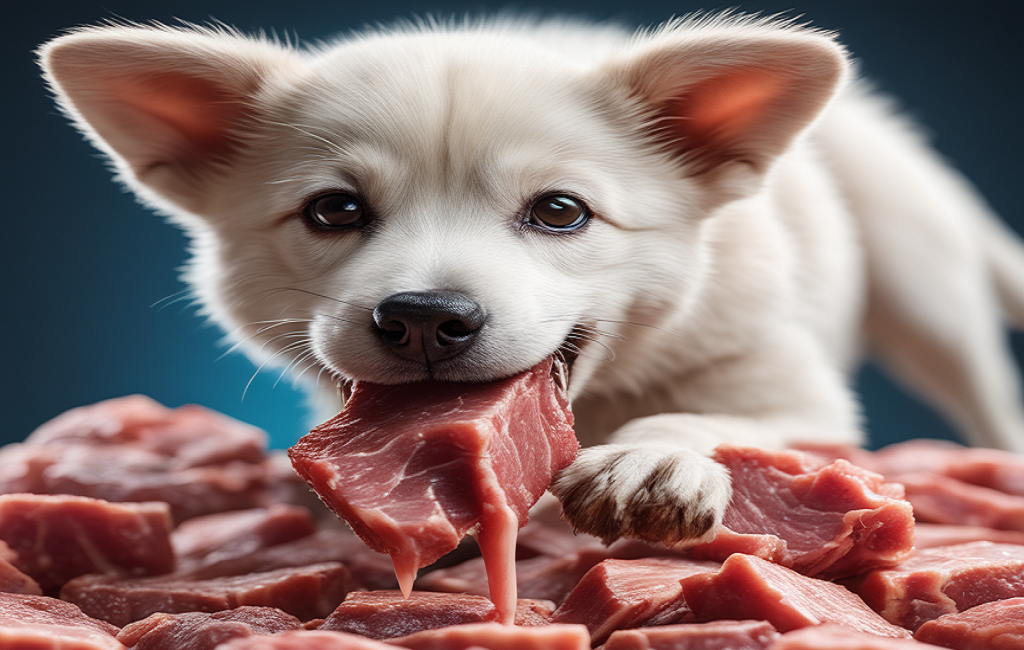
1 thought on “Unleashing the Truth of 2023: Can Dogs Safely Consume Raw Meat?”